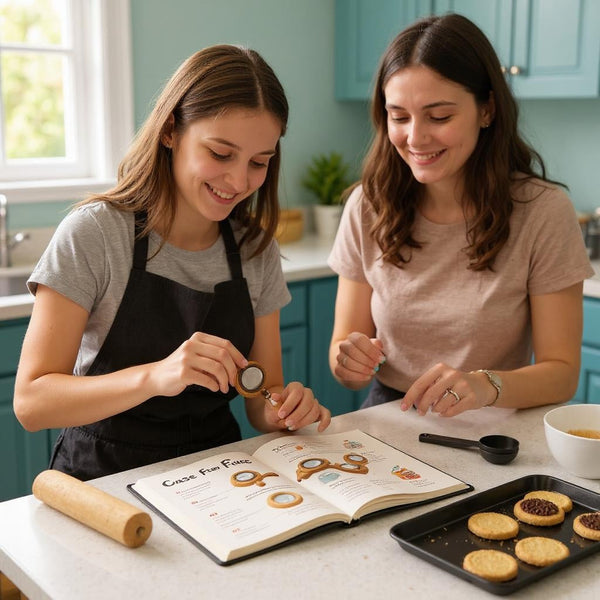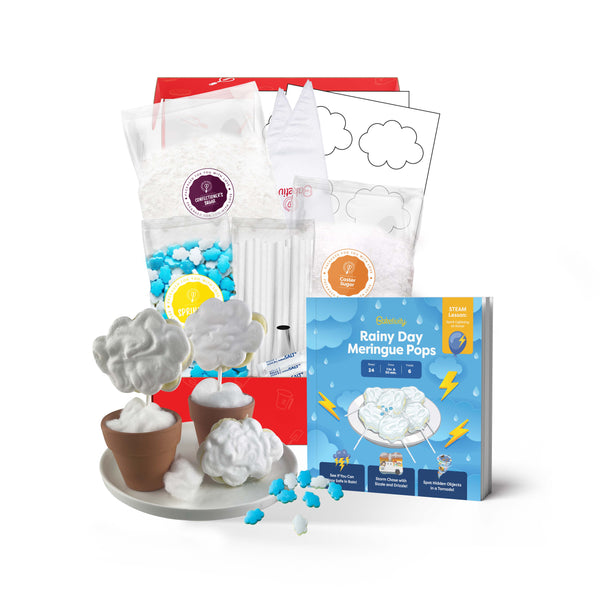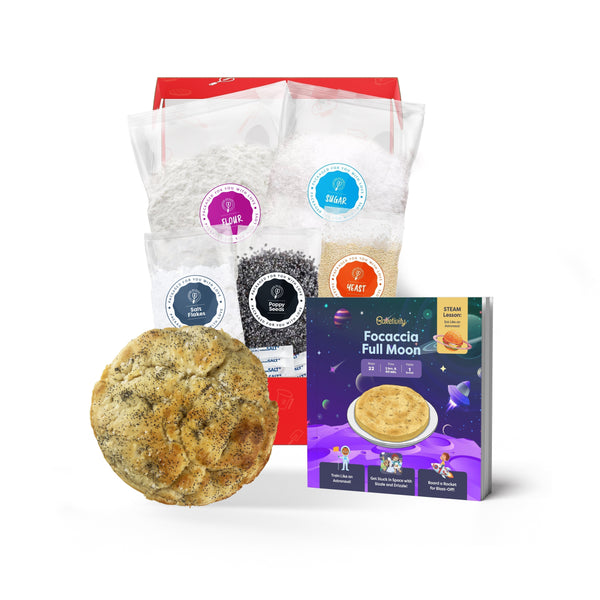We've all been there: it's dinnertime, and suddenly our kitchen turns into a battleground. Kids refusing to eat their veggies, tears over unfamiliar foods, and the classic "I'm not hungry" excuse. Sound familiar? These mealtime struggles can leave even the most patient parents feeling frustrated and defeated.
But what if we told you there's a way to end these dinnertime battles for good? Imagine peaceful family meals where everyone enjoys their food without fuss. It might seem like a distant dream, but it's entirely possible. In this article, we'll share practical tips and tricks to transform your dining table from a war zone into a harmonious haven. Ready to say goodbye to mealtime mayhem?Key Takeaways
- Create a positive mealtime environment by establishing consistent routines and setting a pleasant atmosphere
- Involve children in meal planning and preparation to increase their interest in food
- Offer choices within limits and use positive reinforcement to encourage healthy eating habits
- Address picky eating by gradually introducing new foods and making meals fun and interactive
- Model good eating habits as parents and seek professional help if mealtime struggles persist
Understanding Dinnertime Struggles with Children
Dinnertime struggles with kids are a common hurdle for many families. Let's dive into the challenges parents face and how these battles affect family dynamics.Common Challenges Parents Face
Parents often encounter several obstacles during mealtime:- Picky eating: Children refusing to try new foods or sticking to a limited menu
- Food rejection: Kids pushing away plates or refusing to eat altogether
- Mealtime distractions: Little ones more interested in toys or screens than eating
- Power struggles: Children asserting independence by refusing to eat
- Time constraints: Rushed meals due to busy schedules
- Food waste: Preparing meals that end up untouched
The Impact of Mealtime Battles on Family Dynamics
Dinnertime conflicts can ripple through family relationships:- Increased stress: Tense mealtimes create a negative atmosphere
- Reduced quality time: Battles overshadow family bonding opportunities
- Nutritional concerns: Worries about children's health and growth
- Emotional strain: Parents feeling guilty or inadequate
- Sibling rivalry: Different eating habits causing comparisons or jealousy
- Disrupted routines: Inconsistent mealtimes affecting overall family schedules
Creating a Positive Mealtime Environment
A positive mealtime environment sets the stage for enjoyable family dinners. We'll explore how to transform your dining space and routines to make meals more pleasant for everyone.Setting the Right Atmosphere
Bright, cheerful spaces can work wonders for mealtime moods. Try these simple tricks:- Use colorful placemats or a fun tablecloth
- Play soft background music
- Light scented candles (away from kids' reach)
- Decorate with fresh flowers or kid-friendly centerpieces
Establishing Consistent Routines
Routines give kids a sense of security and help meals run smoothly. Here's how to create a mealtime rhythm:- Set regular meal times
- Assign age-appropriate tasks (setting the table, filling water glasses)
- Begin with a family ritual (saying grace, sharing gratitude)
- End meals with a consistent clean-up routine
Effective Strategies to End Dinnertime Battles
 Let's explore practical ways to turn mealtime from a battleground into a peaceful family gathering. These strategies will help create positive experiences around food and reduce stress for everyone at the table.
Let's explore practical ways to turn mealtime from a battleground into a peaceful family gathering. These strategies will help create positive experiences around food and reduce stress for everyone at the table.
Involving Kids in Meal Planning and Preparation
Getting kids involved in meal planning and preparation is a game-changer. We've found that children are more likely to eat what they've helped create. Here are some fun ways to include them:- Ask for their input when planning weekly menus
- Take them grocery shopping and let them pick out new fruits or veggies
- Assign age-appropriate kitchen tasks like washing vegetables or setting the table
- Let them help measure ingredients or stir mixing bowls
- Create a "build-your-own" meal night with taco bars or pizza stations
Offering Choices Within Limits
Giving kids a sense of control can work wonders. We're not talking about short-order cooking, but rather presenting limited options:- "Would you like carrots or broccoli with dinner?"
- "Do you want your sandwich cut into triangles or squares?"
- "Should we have chicken or fish tonight?"
Using Positive Reinforcement
Positive reinforcement can turn the tide on dinnertime battles. Here's how we can make it work:- Praise effort, not just results: "I love how you tried that new food!"
- Use a sticker chart for trying new foods or eating veggies
- Create a "Food Explorer" badge for adventurous eaters
- Share stories of your own food discoveries
Addressing Picky Eating Habits
Picky eating is a common challenge for parents during mealtime. We've got some practical strategies to help expand your child's palate and make mealtimes more enjoyable for everyone.Introducing New Foods Gradually
Start by offering small portions of new foods alongside familiar favorites. This approach reduces overwhelm and increases the likelihood of acceptance. Try the "one bite rule," encouraging kids to taste a new food without pressure to finish it. Pair new foods with dips or sauces they already enjoy. Repeated exposure is key—it can take up to 15 tries before a child accepts a new food. Be patient and persistent, celebrating small victories along the way.Making Meals Fun and Interactive
Who says meals can't be playful? Turn dinner into an adventure by creating food art on the plate. Use cookie cutters to shape sandwiches or vegetables into fun designs. Play "food detective," guessing ingredients in a dish. Have a "rainbow plate" challenge, where kids try to eat foods of different colors. Remember the broccoli trees and mashed potato mountains of your childhood? Bring that imagination to the table! Ever tried a "build-your-own" meal night? Set out taco fixings or pizza toppings and let kids assemble their own creations. It's like a delicious art project they can eat! How about a "backwards dinner" where dessert comes first? (Just don't tell the dentist!) What's the silliest food combination you've ever tried? Share your own funny food stories to show that experimenting with food can be fun. You could even create a family food journal, documenting new foods tried and rating them together. By making mealtimes interactive and fun, we're not just feeding bodies—we're nurturing adventurous eaters and creating lasting family memories. What creative mealtime ideas have worked in your household?Managing Screen Time and Distractions
Screen time and distractions can derail family dinners, but with the right strategies, we can create a focused mealtime environment. Here's how to tackle these challenges effectively:Setting Clear Rules for Technology Use
We've all been there – phones buzzing, tablets pinging, and TV blaring in the background. It's time to nip these tech interruptions in the bud. Let's establish some ground rules:- Declare a "No Devices at the Table" policy
- Create a designated spot for phones and tablets during meals
- Turn off the TV during dinner
- Lead by example – put your own devices away
Encouraging Family Conversation
With screens out of the way, it's time to bring back the lost art of dinner table chatter. Here are some ideas to get the ball rolling:- Play "High-Low": Each family member shares their day's high point and low point
- Use conversation starter cards or games
- Discuss current events (keeping it age-appropriate)
- Share funny stories or jokes
Dealing with Specific Mealtime Issues
Mealtime challenges come in various forms, and we've got strategies to tackle them head-on. Let's dive into some common issues and how to address them effectively.Handling Food Refusal
Food refusal can be frustrating, but there are ways to overcome it. We recommend offering a variety of foods and textures at each meal. This approach increases the likelihood of your child finding something they enjoy. Try presenting refused foods in different ways - for example, raw carrots instead of cooked ones. It's also helpful to pair new or disliked foods with familiar favorites. Remember, it can take up to 15 exposures for a child to accept a new food. Patience is key! Avoid pressuring your child to eat, as this can lead to negative associations with certain foods. Instead, model positive eating behaviors yourself. When kids see parents enjoying a wide range of foods, they're more likely to follow suit. Have you considered turning food refusal into a game? Create a "Food Explorer" chart where kids earn stickers for trying new foods. This playful approach can make the process fun and rewarding.Addressing Table Manners
Teaching table manners doesn't have to be a chore. Start by setting clear expectations for behavior at the table. This might include using utensils properly, chewing with mouths closed, and not talking with food in their mouths. Make learning manners fun by playing the "Fancy Restaurant" game. Set the table with your best dishes and pretend you're dining at a high-end restaurant. Kids can take turns being the waiter or the chef, practicing their please and thank yous along the way. We love using positive reinforcement to encourage good manners. Praise specific behaviors you want to see more of, like "I really like how you're using your fork to eat your peas." This approach is more effective than constantly pointing out what they're doing wrong. Here's a funny story: One dad we know taught his kids about keeping elbows off the table by balancing a small stuffed animal on his own elbow during dinner. The kids found it hilarious and quickly learned to keep their elbows down to avoid knocking over their own "elbow buddies." What's your favorite way to make learning manners fun? Sharing ideas can help build a community of parents supporting each other through mealtime challenges.The Role of Parents in Modeling Good Eating Habits
Ever heard the saying, "Monkey see, monkey do"? Well, it's spot on when it comes to kids and eating habits! We parents are the real MVPs in shaping our little ones' relationships with food. Let's face it, we've all been there - sneaking veggies into smoothies or bribing with dessert. But what if we could lead by example instead? Picture this: You're at the dinner table, savoring every bite of your broccoli like it's a gourmet treat. Your kids might look at you like you've grown a second head, but trust us, they're taking notes! It's like being a food superhero, and your superpower is making healthy choices look cool. So, how can we flex our culinary muscles and show our kids the ropes? Here are some tried-and-true tricks:- Eat together: Make family meals a non-negotiable part of your routine.
- Try new foods: Be adventurous and sample unfamiliar dishes with enthusiasm.
- Practice portion control: Demonstrate balanced eating by not overloading your plate.
- Enjoy treats in moderation: Show that all foods can fit in a healthy diet.
- Talk positively about food: Avoid labeling foods as "good" or "bad."
When to Seek Professional Help
While we've explored various strategies to tackle dinnertime battles, sometimes professional assistance becomes necessary. It's like trying to fix a leaky faucet - you might handle minor drips, but for persistent issues, calling a plumber is best. Are you constantly worried about your child's eating habits? Do mealtimes feel like a never-ending struggle? If so, you're not alone. Many parents face similar challenges, and there's no shame in seeking expert guidance. Here are some signs it's time to consult a professional:- Extreme pickiness: Your child eats fewer than 20 different foods.
- Weight concerns: Significant weight loss or gain.
- Nutritional deficiencies: Persistent fatigue, weakness, or frequent illnesses.
- Anxiety or distress: Meals cause intense emotional reactions.
- Sensory issues: Extreme sensitivity to food textures or temperatures.




